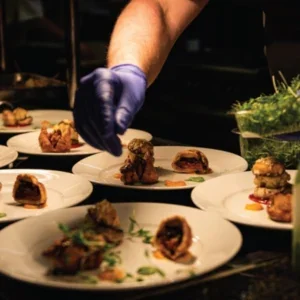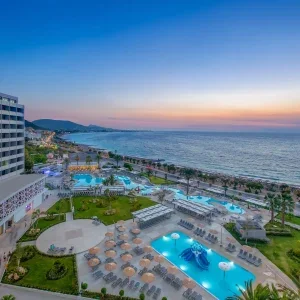An integrated, dynamic social media strategy, featuring everything from spectacular photography on Instagram to speedy replies on Facebook and Twitter, has become a must for any hotel group looking to engage guests and inspire customer loyalty.
The key to success is remembering that hotels do not exist in isolation. Not only do operators need to find the right balance between managing all of this at a group and property-by property level, they’re also well advised to seek help from outside their industry, whether in the form of employees or online influencers. Successful social media strategies are integrated as well as dynamic; all engagement and interaction on social media channels must be consistent with guests’ experiences at properties and on other channels they use to get information about the brand. They must also be fast, always on and adaptable.
Take the strategy at The Hoxton, which currently has hotels in London and Amsterdam, and will soon open properties in Paris, New York and Chicago. “Our strategy is very much based around the brand values and ethos, showcasing the hotels, our neighbourhoods and Hoxtown, our events programme,” explains Julia Pearson, director of PR and communications at property developer Ennismore, which owns and operates the Hoxton hotels.
“We want our channels not only to provide our followers with an insight into our world, but also to be a source of information for them pre, during and post stay, as well as a listening tool for us.”
Feeding frenzy
Indeed, the team ensures they reply to every question, complaint or comment in a timely manner (social media feeds are monitored round the clock, 365 days a year), celebrate user-generated content, randomly ‘surprise and delight’ their followers and post relevant, timely conversation content, rather than hard-sell messages.
“We’re also not afraid to try new things,” Pearson adds. “Social media is still relatively new, and is constantly evolving, so it’s important to keep up to date with changes and test out new tools, while staying true to the brand.”
Similarly, Starwood never sits still, and is currently making use of 360° video opportunities on Facebook and YouTube to create what it hopes is compelling, interactive and highly engaging content for its guests.
“Using video and new-mobile storytelling formats such as Facebook Canvas has allowed us to expand hugely in the mobile space, offering an alternative to traditional online advertising,” says Stephan Croix, Starwood’s VP of marketing for EMEA, adding that social media has also created a whole new ecosystem of online influencers, which the team works very closely with across its brands to gain additional reach and extra credibility.
“An example of this is using new formats, such as Live broadcasting (examples include Nico Rosberg at W Barcelona and Donal Skehan for St Regis), to connect with potential guests and open up the in-hotel experience to a broader audience,” he says.
Starwood also works with other partners and influencers beyond the hospitality industry that share common passions with the group, such as Beautiful Destinations on Instagram, and MTV on Snapchat, to further amplify its reach, and is always keeping an eye on what other industries are doing to identify trends and opportunities.
“It’s vital to remember that we do not work in a vacuum,” Croix stresses. “It is critical to look at knowledge and best practices from other industries, because people’s expectations of their social media experience remain the same regardless of the company or industry. Additionally, from a talent perspective, social media skills are very transferable, so we definitely look to work with people with experience from outside the hospitality industry.”
Pearson agrees. “Ennismore focuses on bringing talent in-house. Part developer, part operator and part creative studio, it has built a multidisciplinary team that specialises in hotels, resorts, bars, restaurants and unique experiences,” she notes. “The company has gathered some of the brightest doers, smartest thinkers and most talented makers from across the business to make it all happen and does look beyond this industry for talent, as the belief is that, even if someone doesn’t have a certain skill set, but is willing to learn and smart enough to figure it out, they will get there.”
Involving question
So, where does the balance lie between managing social strategy at a group and property-by-property level, and who should and shouldn’t be involved?
For Croix, there is one pretty general rule. “For hotels, a global framework together with property execution would be the recommendation,” he advises. “Guest interaction and engagement sits better at property level as it’s all about the personal experience.”
Pearson also believes that, while brand teams must drive social strategy, social media is something with which everyone – from receptionists to housekeepers and GMs at each individual hotel – can get involved. “After all,” she notes, “they are the ones who deal with guests on a daily basis and are able to capture those real-time authentic moments.”
That said, she’s also keen to stress that the specific details of a strategy for one hotel group might look very different from another, depending on factors such as what they’re communicating, to whom and by which channels.
The Hoxton, for example, has had great success using Facebook in Amsterdam, but rather less with Twitter. More generally, the team manages its Instagram account at a group level, but also encourages the different properties to get involved by sending images and information, while each city has its own Twitter and Facebook account, as they are mostly news channels, which people tend to follow on a local level.
At Hilton Worldwide, a similar balance has been struck between central direction and local implementation. It can best be illustrated by its recent direct booking initiative, ‘Stop Clicking Around’.
The campaign, Hilton’s largest ever, was designed to challenge consumer perceptions of how to get the best hotel prices and perks and to reimagine the HHonors loyalty programme to make membership more valuable and useful to travellers. It was supported by a social media challenge between 17 individual hotels across five brands in 14 markets in the EMEA region.
“The social media campaign involved hotels enriching guests’ experiences offline by rewarding direct bookings, which were shared on hotel social media channels, and also saw guests share their own experiences or rewards among their peers with user-generated content online,” explains Gurmej Bahia, Hilton’s senior director, regional marketing, ecommerce and digital acquisition, EMEA.
“The purpose of the Book Direct Challenge was to create unique, creative and engaging content that could be shared on hotel channels in support of Stop Clicking Around,” he continues. “This global campaign created a tangible experience for guests and hotel team members. The dual content approach, incorporating both owned and organic posts, kept the campaign’s momentum going over the four month campaign cycle.”
Positive trend
Responses from guests were overwhelmingly positive, with many also sharing their experiences on Twitter, Facebook and Instagram, further extending the campaign’s reach.
“Hilton’s Book Direct Challenge concluded on 17 June with a total reach of 890,000, 25,000 post clicks, 7,700 reactions, 100 comments, and 222 shares, surpassing all expectations based on existing benchmarks,” Bahia remarks.
Hilton also rewards individual properties for achievements in social media and ensures the entire group learns from particularly well-performing hotels. Hilton London Metropole was the winner of 2015’s Best Use of Social Media Award for Europe, for example, demonstrating impressive growth in both followers and engagement, including an 80% increase in Instagram followers along with a 100% response rate to online comments and reviews. Following the award, the hotel’s marketing team became advocates and social media champions within the company.
Any hotel group looking to engage future guests and retain existing ones should be using social media to not only showcase their brand values in an authentic, creative way – from photography and video campaigns to Live broadcasting – but also speak directly with their fans and future fans, in real time. The most successful will drive their social media strategy from the top, implement it at local level, and bolster it with help and talent from both other industries and online influencers.






